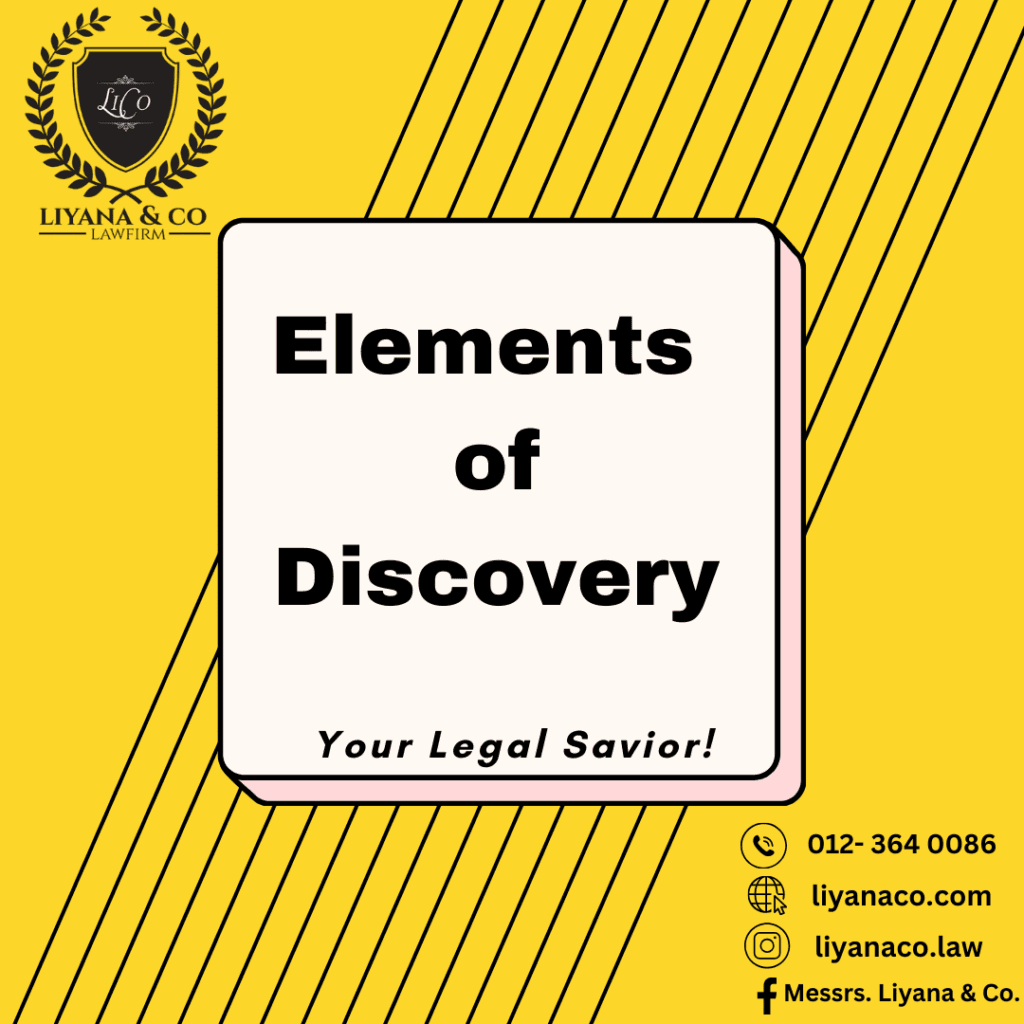
It is a court process in which each party is required to disclose all evidence within his possession, custody or power relating to matters in the action. The purpose of this is to provide the opposite party with a list of all the evidence in the litigant’s possession that are relevant to the issue in dispute. In general, the duty to give discovery is confined to the duty to produce and disclose documents.
Elements of Discovery
In the case of Ding Dong Elevator v Maxwell, with reference to the landmark case of Yemariposa v Mariposa, 3 elements for discovery.
- Documents must be identified
- Documents to be discovered must be relevant
- Documents must be in possession, custody or power of whom the discovery is sought
Types of Documents
Order 24 Rule 3(4), 4 types of documents that relevant to enquiry for the other party to give discovery,
- Documents which the applicant relies or will rely
- Documents which adversely affects his own case
- Documents which adversely affects the other party’s case
- Documents which support another third party’s case
In the case of Raja Letchumi A/L Kiri v Viknes Rishnu A/L Kirri,
The documents sought by the applicant were:
- Statement of accounts in Public Bank, Maybank and CIMB
- The details of purchasing the luxury/antique cars under the Company’s name
- The details of the workshop or warehouse for keeping of the luxury/antique cars that were alleged in the possession of the company
- The invoices issued by the company
- Proof of payment made by the purchaser/client
- The invoices for buying the spare-parts to repair the cars
- The company’s audited account from 2014 to 2022
Proving Necessity
Order 24 Rule 8
In the case of Impi Selia v Krishna Venu, to prove the necessity under Rule 8, the Plaintiff bears the legal onus to satisfy the court that a discovery application against the respondent is necessary. Either
- To fairly dispose of the pending suit;
- To save costs and the grant of order does not constitute a miscarriage of justice.
Inspection of Documents
Order 24 Rule 5
The documents discovered must be inspected, and parties can make copies of those documents. There are 2 methods in which these documents may be inspected;
- Rule 9
The inspection of the listed documents requires serving Form 40, specifying a time within 7 days for document inspection at a designated location after service.
2. Rule 10
This refers to documents mentioned in pleadings and affidavits. Any party can serve Form 41 notice to the other party named in the pleadings or affidavits, allowing inspection and copying of required documents. Rule 10 stipulates a time and place for inspection, typically within 7 days at a specified location.
Do you need answers and solutions in a legal action? Get legal advice from our lawyers at Liyana & Co.
Our lawyers have 10 years of experience in solving complex legal problems.
“Your Legal Savior”
📞📱 Let’s set an appointment and contact us at: